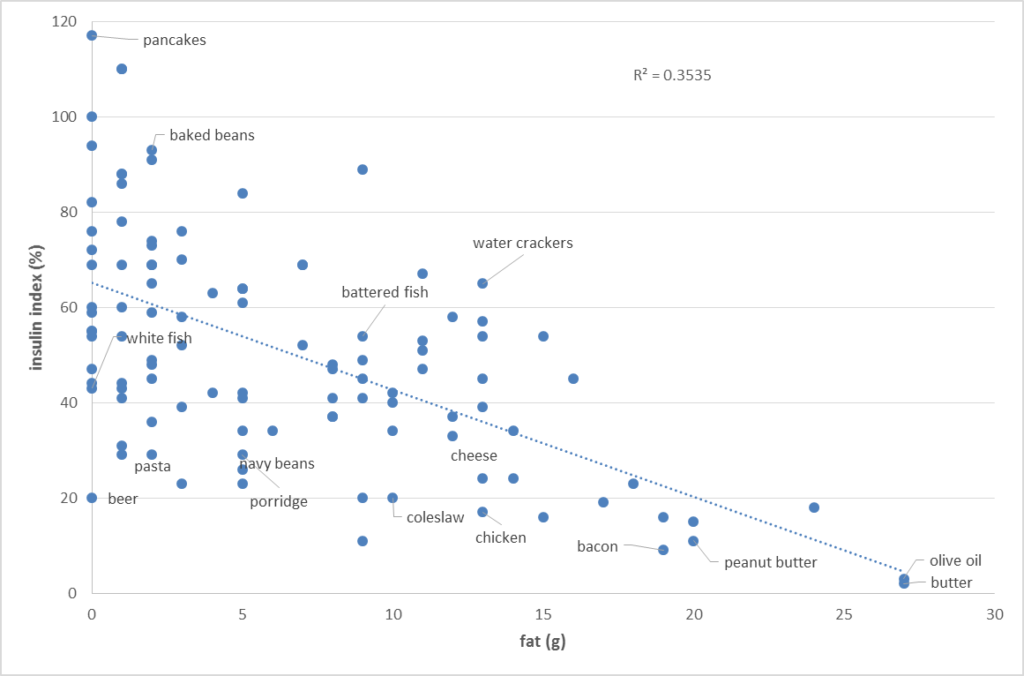Processed Food
Processed food can be defined as food that has been deliberately changed from it’s whole food state before it’s available for us to eat. This process may include grinding, pureeing, cooking, freezing, chopping etc… These foods usually come in a package of some sort, a box, a bag, or a can. Some examples would be chopped lettuce in a bag, canned pumpkin puree, pasta, cereal grains and brown rice flour.
Many would argue that processed foods don’t lose any of their nutritional value but during processing wheat loses about 60% of the bran and germ which would be considered the most nutritious components.
Refined Food
Refined foods are processed foods that have had something removed, changing the nutritional value of that food and leaving it with less nutrients than its whole food counterpart.
Less than half the B vitamins and minerals found in whole wheat is available in refined wheat. (1)
I would also like to point out that packaging material in and of itself has the potential to change the health benefits of food. Plastic as a primary example.
The clear plastic wrap used to keep your foods safe could be hazardous to your health. Researchers have discovered that trace chemicals found in plastic products are responsible for an assortment of medical conditions. As a result, many manufacturers have altered the materials used in their plastic products; however, not all companies have made these changes, and some of the replacement materials may not be as effective in preserving your food. (2)
Less Fat, More Carbs
Back in the 1970s when the diet-heart hypothesis was considered truth, the American government started paying attention and in 1980 released the first every dietary guidelines. These guidelines recommended that people reduce the amount of fat in their diet and increase the consumption of low-fat carbohydrates until they constituted 60% of calories. Below is information from a pamphlet released by The American Heart Association in 1995. The title, The American Heart Association Diet: An Eating Plan for Healthy Americans:
…eat six or more servings of breads, cereals, pasta and starchy vegetables (that) are low in fat and cholesterol. To drink, choose… fruit punches, carbonated soft drinks… (3)
Low Fat = High Carbohydrate
As mentioned in my previous post, there are three macronutrients, proteins, fats and carbohydrates. High protein foods also tend to be high in fat. In order to reduce dietary fat protein would also need to be reduced. This left carbohydrates as the primary low-fat food source. People weren’t filling up on non-starchy vegetables (as noted above). The carbohydrates of choice were processed and highly refined.
Sugar
Everyone was focused on fat. No one was paying attention to sugar. Food manufacturers jumped on the band wagon and started coming out with all kinds of refined low-fat, no-fat food substitutes. The thing that everyone over looked was that when you take natural fat out of food it changes the texture and the flavor in a bad way. To correct this problem fat was replaced with sugar and other additives to enhance the flavor and perfect the consistency. Tip: if you buy anything labeled non-fat or low-fat look at sugars on the nutrition label. Low-fat = High-sugar.
Obesity Epidemic
And that is a brief outline of how dietary changes that started back in the late 70s caused our current obesity epidemic. Carbohydrate is an umbrella term for sugar. Sugar causes insulin to spike. When insulin is high the body partitions incoming energy (food) to fat storage while at the same time making that fat unavailable as fuel. The body is constantly look for a source of energy and nourishment. When food is shuttled into fat storage the body gets very little nourishment resulting in constant hunger and a state of being over-fed but undernourished.
Insulin Will Make You Fat
Insulin is the key to either storing fat or burning fat. Macronutrients play a role in insulin secretion. Adjusting your diet to include a lot of healthy fat, moderate protein and less carbohydrates will reduce insulin allowing fat to be burned not stored. This will in turn make the difference between gaining weight and losing weight.
- Carbohydrates in the form of processed, refined foods, fruit, starchy vegetables and sugary treats cause the greatest dietary insulin response
- Protein causes about half the dietary insulin response of carbohydrates
- Fat causes very little dietary insulin response if any at all so fat can be considered neutral
Below are two graphs from Marty Kendal of optimisingnutrition.com. The first shows the insulin response of some typical foods from the Standard American Diet. The second shows the insulin response from different fatty foods (the fatty foods listed are not all “healthy” fats).


Food choices matter. Hopefully you now understand how what you choose to eat plays a role in weight gain and obesity. This role is beyond calories. Calories don’t necessarily cause you to gain weight. The type and quality of the food you eat is more of an indicator of body weight imbalance than how many calories are in those foods.
In my next post I’ll focus on calories and how what you eat is more important than the actual calorie count.
Start thinking about your diet and how much sugar you may be eating. It’s very possible you thought you were eating a low sugar diet but in reality, now that you know where dietary sugars come from you are in fact eating a lot of sugar. If you carry extra weight around your middle then you are eating too much sugar. Central weight gain is related to imbalanced insulin which often indicates a high sugar diet.
Eat well, feel good, have fun!
References
- http://healthyeating.sfgate.com/wholegrain-pasta-vs-regular-pasta-3476.html
- http://www.livestrong.com/article/530191-clear-plastic-wrap-food-safety/
- Fung, J. (2016). How Obesity Became an Epidemic. In The obesity code: Unlocking the secrets of weight loss (p. 17-19). Vancouver, Canada: Greystone Books Ltd.

I’m Amy a board certified holistic nutritionist, certified functional nutritionist and lifestyle practitioner and certified Life Coach. I help women in midlife understand the changing needs of their body so that they can stop dieting and lose weight permanently. At 56 I live what I teach. Don’t believe the story that your best years are behind you. They are not. Your best years are just starting!
